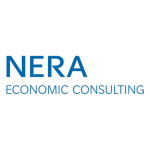The OECD Transfer Pricing Guidelines have introduced the so-called DEMPE concept, which prescribes that transfer prices should reflect the contribution of various group entities to the development, enhancement, maintenance, protection and exploitation (DEMPE) of intangibles. This has far-reaching consequences because local entities are often involved in at least some of these activities, which can increase transfer pricing controversy. Simultaneously, the OECD provides only limited guidance on how the DEMPE concept should translate into appropriate transfer pricing solutions.
During its latest initiatives, the OECD has strongly reinterpreted the transfer pricing principles surrounding the remuneration of intellectual property. Previously, profits from intellectual property (IP) were predominantly attributed based on legal ownership, while now the requirement is that outcomes should be aligned with the DEMPE functions. Legal ownership remains a consideration for transfer pricing, but it has lost its predominance, since there was a certain feeling within the OECD that the legal attribution of IP could be engineered for tax planning purposes too easily. Additionally, the OECD has broadened the intangibles concept beyond the narrow definition of traditional IP rights such as clear identification, whether they can be protected and transferability of legal ownership.
This somewhat blurred economic approach towards intangibles creates significant uncertainties and dispute potential regarding the allocation and taxation of global profits. Given the soft definition of both intangibles and DEMPE contributions, it is likely that national tax authorities will be incentivised to find intangible DEMPE contributions almost everywhere at the local level. This can be used to challenge traditional one-sided transfer pricing solutions, such as benchmarked results because they traditionally assume no unique intangible contribution of the tested parties. More importantly it drives a request transparent multilateral profit split analysis with high risks of major controversies and double taxation.
In anticipation of this, it is highly recommended that taxpayers fundamentally reconsider the way they conduct their value chain analysis (VCA) and global TP documentation. The approach we recommend is the following:
The starting point should be a comprehensive global value network contribution analysis. This analysis focuses on the big picture of what makes the respective multinational group valuable and unique from a customer perspective and what generates its entrepreneurial margins. This assessment of the critical success factors and major entrepreneurial risks is made on the group level and often involves bundling individual intangibles in categories for practical and simplification purposes.
The VCA then attributes the global entrepreneurial profits to the different intangible categories via quantitative techniques like customer surveys or marginal contribution analyses from customer demand patterns. In a simplified example, the VCA of a group could reveal that 75% of the intangible value is in the centrally developed technology and 25% resides in decentralised marketing intangibles. This outcome already shows to local tax authorities that a sales company could at most be entitled to 25% of the residual value, while the remaining 75% should not be subject to controversial discussions. If group consolidated margins were relatively small, it might not even be worthwhile challenging conventional methods.
In the third step, the analysis allocates the profits of each intangible category to the various DEMPE activities. This approach still identifies the common value creation factors for the group, without going into specific details of legal entity contributions. For example, it might be found that generally in the group, development (such as fundamental R&D) contributes 60% to the value of the technical intangibles, while enhancement (such as product adaptions) contributes 20% and the remaining 20% is split between maintenance, protection and exploitation. Similar and other (e.g. capital investment) technical approaches may be used, as for the value contribution analysis under the second step.
Finally, the analysis breaks the results down per country and entity for each individual DEMPE pillar contribution. In the example introduced above, one would now identify how the 'development' aspect of the technical intangibles should be allocated within the group development network, e.g. between the parent company and several development centres in other jurisdictions. Hereby, in line with the OECD guidelines, not only the functional execution should be considered, but also the entity's ability to impact on decision-making and controlling risks.
The approach to sequentially analyse: 1) intangibles categories, 2) intangible value contributions, 3) DEMPE pillars, and 4) country-specific contributions, has various benefits. It is more transparent and isolates some of the profits from major tax disputes. Moreover, in many cases it can demonstrate to tax authorities that fundamentally challenging traditional one-sided TP is a futile exercise as a hypothetical profit split analysis would not reveal substantially different outcomes.
In the next editions, we will follow up with a more detailed exploration of the economic analysis techniques to justify profit allocations within the value chain contribution and DEMPE framework.
NERA Economic Consulting
T: +49 69 710 447 502 and +49 69 710 447 508
E: yves.herve@nera.com and philip.de.homont@nera.com
W: www.nera.com













